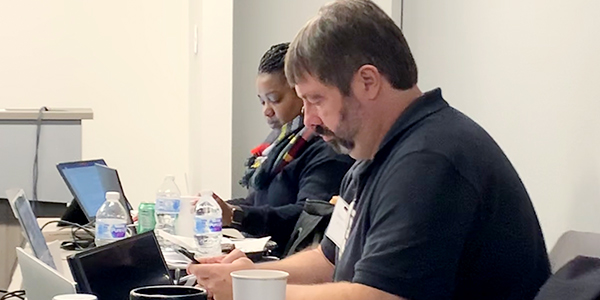By Holden Mann
NERC’s team updating the requirements for determining and communicating system operating limits (SOLs) is preparing for a 45-day comment period and formal ballot to begin April 23 (Project 2015-09).
In a webinar earlier this week, standards drafting team chair Dean LaForest of ISO-NE said the team is hopeful that it has addressed industry objections raised in two previous ballots in 2017 and 2018 on standards FAC-010, FAC-011 and FAC-014. He acknowledged that the SDT’s efforts had not progressed as quickly as hoped over the past several years, due in part to a decision to expand its scope beyond NERC’s original mandate.
Complications from Scope Expansion

“Our drafting team was established to modify a succinct set of FAC standards,” LaForest said. “What has ensued since is a realization … that to do so properly seems to also include an alignment of other standards … that deal with SOLs and SOL exceedances.”
The team saw this move as necessary since exceeding SOLs could have impacts across utilities’ operations, but its widening focus troubled industry participants. Along with the original three standards, the proposal eventually involved changes to CIP-014, PRC-002, PRC-023, PRC-026, FAC-003 and FAC-013, and introduced a new standard, FAC-015.
In particular, the team’s last in-person meeting this year focused on criticism of the potential administrative burden of the logging and communication activities required by the proposed standards. (See SOL Project Team Preparing for March Posting.)
Flexibility in Exceedance Communication
The latest proposal includes several modifications in response to these industry objections. Significantly, requirements in FAC-011 were updated to provide a “clear, consistent framework for SOL exceedance determination” and a new method for communicating exceedances between reliability coordinators and transmission operators. Reliability standards TOP-001 and IRO-008 would also be impacted by the changes.
Taken together, the new requirements would enable RCs to set a threshold for communicating exceedances based on the risk posed to the bulk power system, rather than being tied to a specific number. The team hopes this move will provide operators with the flexibility needed to respond to changing local conditions.
“We feel like this really allows the operators to focus on the critical activities of mitigating the SOL exceedance, rather than … [having] to have my operators pick up the phone … to tell someone else about something that happened five minutes ago,” said Stephen Solis of ERCOT. “That has been the focus of the last few months of intensive discussions on this particular subject, and we feel like we landed on a good spot [and] tied it to IRO and TOP standards so that the notification piece [doesn’t] take up a majority of the operator’s time.”
FAC Standard Changes Dialed Back
In another major update, the team decided to drop its proposed new standard, FAC-015 — which would have addressed criteria for determining SOLs — based on industry feedback that FAC-014 already meets this need without requiring a new standard. Instead, SDT members decided to add a new requirement to FAC-014 mandating that planning coordinators and transmission planners use facility ratings, voltage limits and stability criteria that are “at least as conservative as those used in operations.”
In addition to simplifying the SDT’s proposal, the change will also create a more straightforward case for retiring FAC-010, which relates to determining SOLs for system planners.
“As long as they are either more conservative than [those] used in operations, or they describe why they are not, they meet the intent of the requirement, and there is coordination between the limit assumptions used in operations and planning,” said LaForest. “We believe this will allow us to retire FAC-010 and still meet the original intent and purpose for the joint standards issued some 10-plus years ago.”



